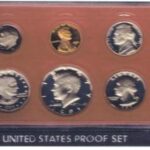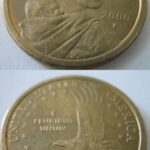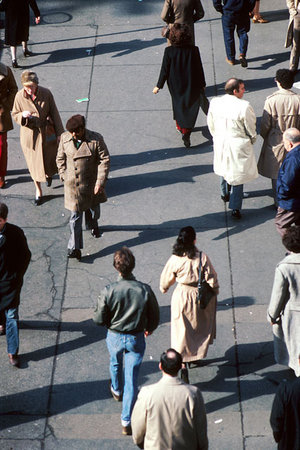In case you didn’t know it, there is no silver in the general circulation Eisenhower dollar coins of 1971-78, nor the new Presidential $1 coins, or their small sized predecessors, the 2000-to-date Sacagawea ‘golden dollars,’ or the 1979-81 Susan B. Anthony dollar coins, which were resumed for a single year in 1999. I hasten to point out that certain of the previous issues were struck in silver as proof coins for collectors.
None of them should in any way be mistaken for, or called, silver dollars. Read my lips: there is no silver in them. And there is no gold in the Sacagawea “golden dollar” coin either.
Yet people, including some numismatists, do exactly that, consciously or unconsciously, whenever they make reference to these coins. Their diminished size aside, the circulation strikes of any of the aforesaid pieces do not contain any silver whatsoever. In some respects this misidentification can be compared to the more commonly made reference of Lincoln Head Cents being called “pennies.” The U.S. doesn’t mint pennies, it mints cents. Our British cousins mint pennies.
As all numismatists know, the last genuine silver dollar minted for general circulation that actually contained silver, was designer Anthony Francisci’s Peace Dollars, struck from 1921-35, some 29 years before the government pulled the silver content from all dimes, quarters, and reduced the silver content in half dollars to 40%.
In fact, the demise of the short-lived Peace Dollar series marked the end of the U.S. dollar coin series until it was resumed, albeit briefly in clad coinage with Frank Gasparro Eisenhower Dollar design in 1971. That’s when the misidentification began. People, some dealers and coin publications as well, erroneously dubbed them ‘Ike Silver Dollars.’
Most coin catalogs, magazines, and newspapers in the hobby usually (not always) call the Sacs, Susie’s, and Ike’s what they are: dollar coins, not silver dollars. Though they follow in the denomination family line of the large, silver cartwheels first minted in 1794 (but not known as cartwheels till the Morgan design of 1878-1921), they are not the legitimate inheritors of the mantle. Once could say their absence of silver makes them wannabe silver dollars.
The removal of silver from our dollar coins, and the end of the series with the demise of the Peace Dollar, wrote a final chapter to one of this country’s most blatant examples of pork-barrel legislation and the political influence that powerful private sector lobbyists had on the Congress of The United States. This influence is still seen in other aspects of government, but none illustrate the effects better than the shenanigans related to our country’s silver coinage between the 1870s and slightly beyond the Roaring ’20s. The lobbyists even got the government to create a
branch mint facility at Carson City, Nevada.
Silver content in U.S. coins goes back to the days when Martha and George Washington allegedly bit the bullet and turned over some of their knives, forks and spoons to for melting so the new republic’s new mint could stamp out dimes. Over the years and decades which followed the mint located other sources to satisfy their silver needs (otherwise the Washington’s would have been using plastic utensils from McDonalds or Kentucky Fried Chicken for dining. You’ll note we didn’t mention Burger King, and that’s because the 13 Original Colonies had fought a war to diminish or remove any monarchial reference in the new country. Just go with me folks, I’m on a roll).
In the early years of these United States the acquisition of silver for minting coins was a many branched tree. That’s easy to understand since from the 1600’s to the mid-1800’s Boliva, Peru and Mexico grew to produce about 85% of the worlds silver production. And the U.S. hadn’t discovered its own sources of silver yet.
Silver was mined and purchased from Mexico, and elsewhere, but initially the silver coins of other nations, Spanish Reales, et al, went to the pot to be reincarnated as American silver coinage.
So it was in this atmosphere of limited silver availability that in the late 1850s the announcement of a mother lode of silver had been discovered in America would be earth-shaking. Prospectors had discovered mine-able amounts of silver in Nevada’s mountains. The incident would preface the largest silver find in U.S. history.
Even as respectable amounts of silver were being found on the hillsides, there were hints that nearby was the proverbial ‘mother lode’ Such thoughts began to germinate when after a torrential rain someone assayed the mud and found it contained $2,000 worth of silver per ton!
The miners eventually a small silver vein. As they went deeper it became a foot wide, then 10 feet, then twenty. The thing got so wide it appeared to be as large as a mountain itself. The discovery was named the Comstock lode, and it produced upwards of $8,000,000 in silver per month.
The extraordinary amount of silver being mined at Comstock, and from other large discoveries at the Leadville area in Colorado and various parts of Utah, brought worldwide silver prices to their lowest point in history. There was such a sudden abundance, in fact, that the US and other countries questioned if silver should continue to be considered money.
Such thoughts caused alarm and chagrin among the silver producers. Sparsely populated Nevada had become a state during Lincoln’s second term in The White House in 1864. Nonetheless, it had two United States senators who, with the support, urging, and generous financial considerations, negotiated with Senators from the powerful east coast states (who wanted higher tariffs and other things) and the silver lobbying paid off. Rather than ending the use of silver in coins, Congress did the reverse and passed the much-wanted higher tariffs for the Eastern Establishment and legislated that the mint produce millions of silver dollars every month. Millions more than were needed for general use and commerce. The excess was simply bagged and stored in Mint vaults and, eventually, the vaults of Federal Reserve and other member banks around the country.
[Note: This writer can recall after legislation local banks were authorized to dispose of such silver holdings, that in 1960-61, a bank in my then hometown of Bayonne, New Jersey, was selling off hundreds of $100 bags of bright, uncirculated silver dollars at face value ($1 per silver dollar) to anyone who walked in and plunked down greenbacks.]
But there’s more, folks. Back in the 1863 Congress authorized a new branch Mint be established in Carson City, Nevada (with the obvious ‘CC’ mint mark) to expedite the transformation from silver ore to bullion to coin. However, something called The Civil War in the North, and The War Between The States in the South, delayed building and opening until 1869. It didn’t take long before somebody proffered that a new mint should have a new coin. The result was George Morgan’s Silver Dollar design that was minted continuously from 1878-1904 and then resumed again for the single year of 1921.
The Carson City Mint coins were struck with a “CC” mint mark beneath the eagle on the reverse. It is the only two letter mint mark in US coinage history. Because the Carson City Mint was relatively small, it was unable to produce anyway near the annual quantities of Morgan silver dollars that Philadelphia, San Francisco, or New Orleans mints punched out.
Eventually the halcyon days of the Comstock Lode and the need for a Mint in the area passed into history. Only 23 years after beginning operations in 1870, the Carson City mint closed forever.
However, when World War I broke out (1914-19) in Europe, Congress authorized large amounts of silver bullion should be ‘lent’ to England. This was accomplished by the passage of the Pittman Act in 1918. It resulted in millions of silver dollars being melted and recast as bullion to be sent to England. The relatively low-mintages of Carson City cartwheels did not save them from the pot. Fortunately, there were some uncirculated Carson City Silver Dollars, overlooked in government vaults, which escaped the World War I meltdown and a similar meltdown during World War II (1939-45).
One of this writer’s favorite asides to the above is a story that has become legend about U.S. Senator ‘Silver Key’ Pittman of Nevada, the shaker and mover behind the silver legislation that carries his name. He died on November 10, 1940, only five days after winning reelection.
Key Pittman earned the nickname “Silver Key” for the aforesaid legislation. For decades stories have persisted that Pittman actually died before the election, but political cronies kept his body in a bathtub filled with ice at a Reno hotel so his Senate seat could remain Democratic (Pittman’s successor would be appointed by Democratic Governor Edward Carville). True or not, the man who had engineered the infamous silver act that melted all those cartwheels was conspicuously absent from public functions during the last week of the 1940 election campaign.
Democratic Party bosses kept Pittman’s body in refrigeration so when his death was publicly announced, after the election of course, they wouldn’t have to produce a decomposed corpse. During the final days of the campaign, when reporters asked Pittman staffers why “Silver Key” wasn’t around, the reply was “We’re keeping him on ice.”
Whether true or just a tall tale from the West, thank you senator, for enriching numismatics with these beautiful coins. Morgan Silver Dollars still remain one of the most collected U.S. coin series. Some say the most collected.
So, now you know, and the next time you dig out that 1800’s-dated (but still brand new looking!) Morgan Silver Dollar you got from a relative at graduation from elementary school, you’ll know the interesting stories behind it.
Reference:
- Copyright © 2007 for my regular monthly column in Canadian Coin News






